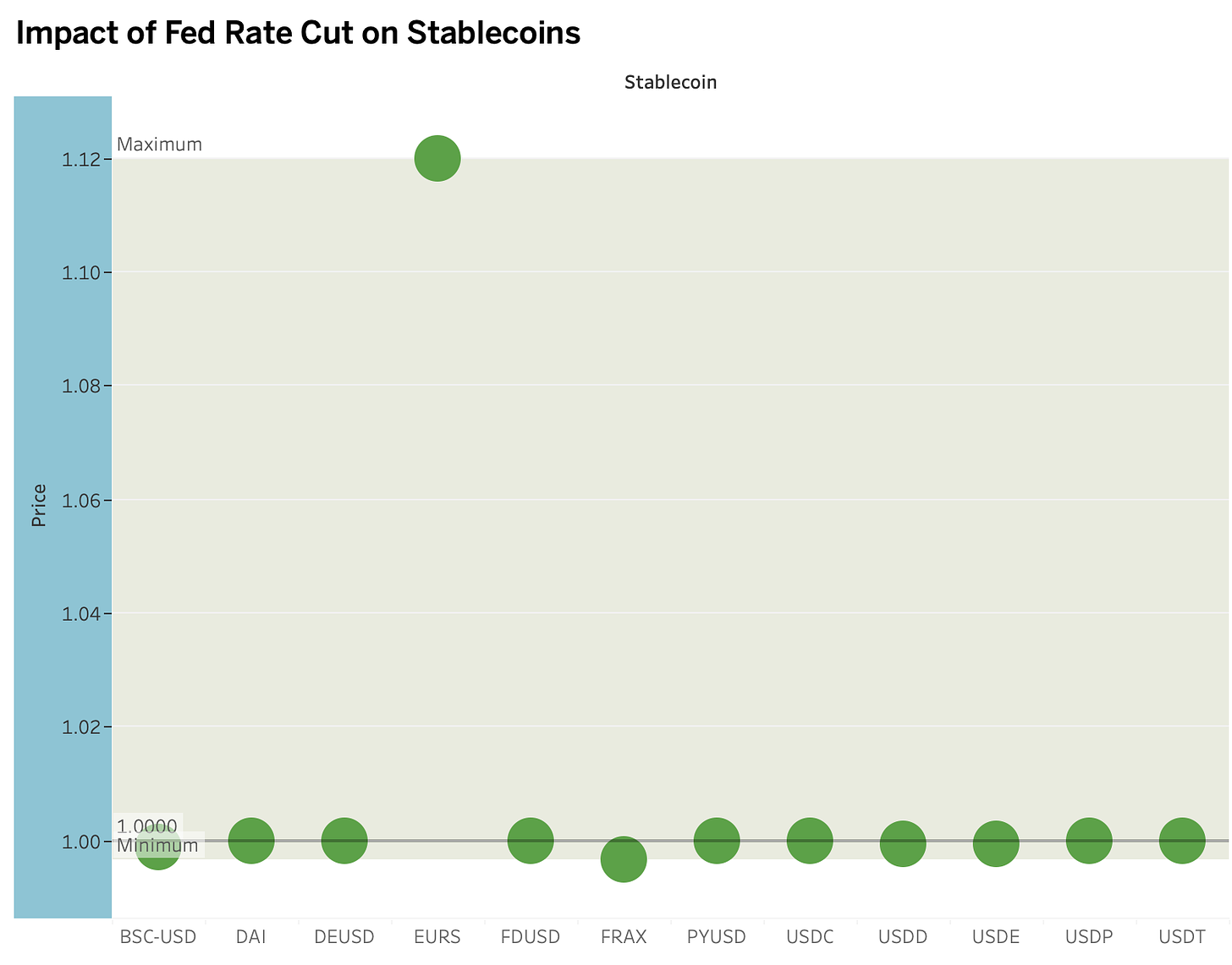How the Fed's Rate Cut Affected Stablecoins
Despite the dramatic Fed rate cut, stablecoins maintained their pegs, reinforcing their utility as hedging tools and safe havens for investors seeking stability.
In the aftermath of the Federal Reserve's 50 basis point interest rate cut, the stablecoin market provided a snapshot of how digital assets respond to macroeconomic shifts.
This data visualization highlights the immediate impact on stablecoin prices and market behavior at the time of the Fed’s announcement.
Key Insights:
1. Majority of Stablecoins Maintained Stability:
Most stablecoins, including major market cap coins Tether (USDT), USDC, Dai (DAI), held their $1.00 peg despite the Fed's rate cut. This behavior reinforces their role as safe-haven assets, where investors park their funds during volatile market conditions.
The clustered, low deviation from $1.00 in the chart visually emphasizes that stablecoins largely stayed true to their core purpose of maintaining stability.
2. Outliers: STASIS EURO (EURS) Deviates Significantly:
The largest outlier is STASIS EURO (EURS), which reached $1.12. This spike suggests that EURS, which is pegged to the euro, may have been affected differently than USD-pegged stablecoins. It indicates possible fluctuations in the EUR/USD exchange rate or increased demand for the euro-pegged asset in this period.
Its deviation also suggests EURS has a relatively lower market cap compared to dominant USD-pegged stablecoins like Tether and USDC, which could make it more prone to price deviations.
3. Stablecoins as a Safe Haven Post Rate Cut:
With most stablecoins remaining within a tight range around $1.00, it’s clear that investors may have turned to stablecoins to hedge against broader market volatility. This reinforces the idea that stablecoins are viewed as a protective asset class during uncertain economic times, even in the crypto space.
4. Market Cap Distribution:
The relative size of the circles in the visualization represents market capitalization. Larger stablecoins like Tether (USDT) and USDC maintain their size and stability, signifying high investor confidence and liquidity.
Smaller market cap coins, like Elixir deUSD (DEUSD) and First Digital USD (FDUSD), also maintained their peg but with less liquidity, which might imply a more volatile future if trading volumes surge.
5. Uniform Price Stability Across Other Coins:
The visualization demonstrates that aside from STASIS EURO, no significant price deviations were observed among USD-pegged stablecoins.
Despite the rate cut, these assets remained highly stable, even those with smaller market caps like Pax Dollar (USDP) or Frax (FRAX), indicating robust market mechanisms are in place to protect their pegs.





